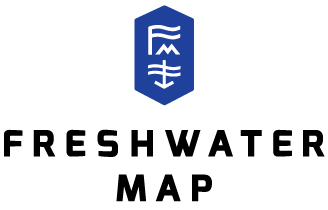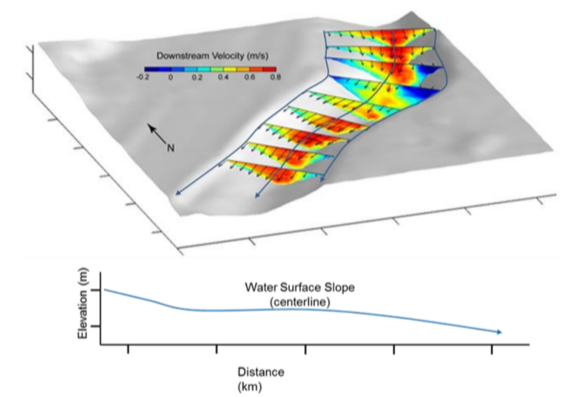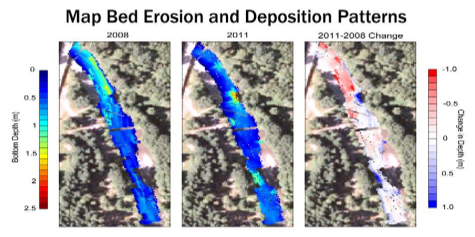How are our maps used?
Fish Habitat and River Restoration Projects – Our data is often used to map the ideal habitat locations for threatened or endangered species. During a recent project, we were tasked with surveying an engineered log jam. The log jam had the purpose of creating ideal fish habitat. We completed our survey and interpolated the data for our clients. They then used that data to monitor the engineered log jam project for efficacy in creating ideal fish habitat. Our surveys can be conducted once and then repeated at different locations or annually to monitor the area over time. This data is extremely important to the success of river restoration projects.
3-D plots of the flow field important to fishery habitat assessment as well as monitoring river restoration projects.
Sediment Erosion and Deposition in Rivers – Our Team can collect data during flood events to show where river bed sediments are moving and where bed scour and deposition is occurring. This is extremely useful in projecting potential river flow changes and erosion. The uses for this type of data are many, including riverside development concerns, determining future flood hazards, and planning river stewardship projects.
River Stewardship – Our work makes it possible to capture and analyze the hydrodynamics of a river in ways never before possible, thereby enabling river stewards, such as tribal, city, state, and non-profit organizations to make management decisions based on the best data available.
Other Uses – There are many more ways our maps and data can be used, including the creation of maps for recreational river activities like rafting and fishing, analysis of dams and their impact on rivers, and many other applications.


